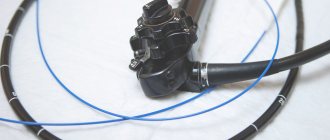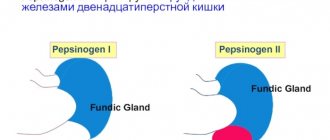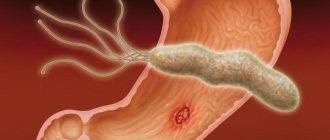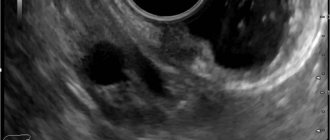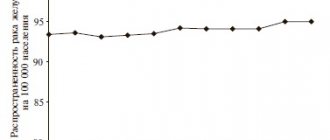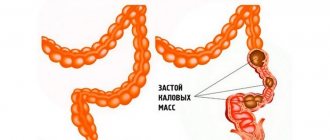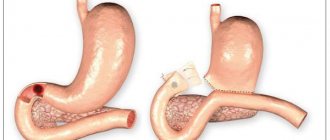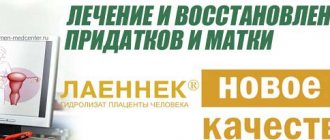What is infectious diarrhea and what are its causes?
Infectious diarrhea is a disease caused by an infectious factor. Its main symptom is an increase in the frequency of bowel movements and stool weights of more than 200 g during the day, caused by an increase in the amount of water filling the intestines. Liquid or semi-liquid stool may contain mucus, pus or blood. In 90% of cases, infectious diarrhea reaches its maximum intensity after some time and then spontaneously, gradually disappears, usually even before consulting a doctor.
The causes of infectious diarrhea are viral, bacterial infections, and less commonly, protozoa and pathogenic (disease-causing) fungi. The source of infection is food and water contaminated with microorganisms, and the reservoir (that is, an element of nature in which pathogenic microorganisms are located) is sick animals or humans.
However, poisoning is caused by eating food contaminated with excrement from the gastrointestinal tract of a patient, or by directly consuming products from a sick animal in the form of unpasteurized milk, as well as eggs and meat that have been subjected to improper heat treatment. More rare cases of infection involve direct contact with a sick person.
How to treat bacterial diarrhea
If you have bacterial diarrhea, it is important to treat it right away. You cannot wait until the diarrhea goes away on its own; you need to restore normal bowel function. Diarrhea is not a protective mechanism to fight infection, but a symptom of indigestion. If diarrhea is left untreated, it can lead to dehydration and make you feel even worse. IMODIUM® Express quickly calms the intestines, bringing them back to normal. The tablet does not need to be taken with water. It dissolves in the mouth in 2-3 seconds and stops diarrhea within an hour.
The information in this article is for reference only and does not replace professional advice from a doctor. To make a diagnosis and prescribe treatment, consult a qualified specialist.
Find out more about IMODIUM® Express
1 Alexander Rapisarda, MD, is a specialist in gastroenterology and hepatology at Robert Wood Johnson University Hospital in New Brunswick, New Jersey.
How common is infectious diarrhea?
Infectious diarrhea is the second most common cause of illness and death (after cardiovascular diseases) in the world. This mainly concerns poor societies with a low standard of living, as well as periods of war and natural disasters such as drought or flood. Over the course of a year, rotavirus infections cause 120–140 million cases of illness and about 600 thousand deaths, primarily in young children.
Infectious diarrhea can occur as an isolated disease or in the form of group poisoning after joint exposure, that is, contact with an infectious factor. New epidemiological problems are associated with:
- infections with drug-resistant bacteria and greater toxicity to the intestine
- globalization, facilitating exposure to factors from other regions of the world
- an increase in the population of people with impaired immunity and elderly people with increased sensitivity to infection.
The type of food poisoning is also due to the seasonality of the occurrence of infections. Infections caused by bacteria of the genera Salmonella and Shigella occur in the summer months, Campylobacter jejuni infections in the spring, and Yersinia enterocolitica and rotavirus infections in the winter.
How does infectious diarrhea manifest?
Main symptoms
The main symptom of enteritis is diarrhea, as well as the accompanying cramping pain in the abdomen, as a result of the presence of a large amount of fluids in the intestines, stimulating peristaltic activity.
Secretory diarrhea (i.e., excretory diarrhea) is profuse, watery, and persists despite cessation of oral nutrition.
With infectious diarrhea of an inflammatory nature, as well as caused by invasive bacteria, pus, blood and mucus often appear in the stool.
Depending on the variety of dominant symptoms, they are distinguished: gastroenteritis (inflammation of the stomach and small intestine), enterocolitis (inflammation of the small and large intestines) and proctitis (inflammation of the rectum). Gastroenteritis is characterized - in addition to the symptoms of enteritis - increased nausea, vomiting, pressure and pain in the epigastrium. Involvement of the large intestine in the inflammatory process is associated with the appearance of pain in the lower abdomen and left iliac region, as well as a urge that precedes the release of diarrheal stool.
Septic symptoms
Penetration of invasive bacteria through the intestinal immune barrier can lead to septic symptoms (that is, resulting from the transfer of bacteria in the blood), including inflammatory damage to internal organs. As a result of dehydration caused by vomiting and diarrhea, there is a decrease in the elasticity of the mucous membranes, skin, and skin turgor. Thirst increases, a feeling of dryness, stickiness of the mucous membranes appears, difficulty swallowing dry food, muscle cramps, weakness, and changes in body temperature. The secretion of sweat, tears, and urine also decreases, and with severe dehydration - in the absence of fluid replacement - there is a risk of vascular collapse. Patients also often experience a decrease in blood pressure, as well as an acceleration of cardiac activity when changing position from horizontal to vertical.
With severe dehydration (loss of about 10% of body weight), in addition to circulatory disorders, symptoms from the central nervous system appear in the form of psychomotor agitation, drowsiness, and coma.
Further development of the infection
The further development of infection, in addition to the type of infectious agent and its infectious dose, is influenced by protective mechanisms, including: immunity (depending on the patient’s age, chronic diseases and previously used treatment), the effect of hydrochloric acid in the stomach, intestinal motor function (decreased motor function of the gastrointestinal tract) intestinal tract, in turn, disrupts the cleansing of the intestines from the factor that caused the disease), as well as its microflora (normal intestinal microflora is a natural barrier to the development of certain food infections).
Period of convalescence (recovery)
During the period of convalescence, symptoms of post-infectious immune syndromes may appear in the form of skin changes (erythema nodosum), nerve damage (), reactive arthritis, hemolytic-uremic syndrome, that is, destruction of red blood cells and renal failure.
What treatments are there for infectious diarrhea?
During the acute period of illness, rest and sick leave are indicated. Most patients can be treated on an outpatient basis.
Rehydration and other treatments for infectious diarrhea
The mainstay of treatment is rehydration (oral or intravenous). In addition, a therapeutic diet, symptomatic and, in some patients, antimicrobial treatment are used. Indications for referral to hospital concern cases of significant dehydration (in the elderly or young children), as well as increased vomiting that interferes with oral rehydration. The need for hospital treatment also concerns complications of infectious diarrhea.
From the moment diarrhea and vomiting occur, it is necessary to begin actions to prevent dehydration. Loose stools or vomiting require fluid replacement in the amount of 5–10 ml/kg body weight or 2–5 ml/kg, that is, 350–700 ml or 140–350 ml of fluid after each loose stool or vomiting.
Glucose-electrolyte solutions
The appearance of thirst during infectious diarrhea indicates a body weight deficit of up to 2% and a lack of at least 1000 ml of fluid. In this case, there is a need to replenish the approximate volume of fluids by administering glucose-electrolyte solutions for 3–4 hours. In most cases, they can be taken orally because, despite diarrhea, the ability to actively absorb electrolytes and glucose is preserved, and the water contained in the secretions is absorbed in the initial part of the small intestine.
Important
You can make your own glucose-electrolyte solution using the method described below.
The following should be dissolved in a liter of water:
• ¾—1 teaspoon table salt
• 3-8 teaspoons of sugar (glucose is healthier than sucrose)
• ½ teaspoon baking soda
• add 1 glass of orange juice (to replenish potassium deficiency)
Over-the-counter rehydrating preparations are available in pharmacies (in sachets and sachets with contents ready to prepare a solution).
In the absence of oral rehydration or its ineffectiveness, paralytic ileus, persistent vomiting, severe dehydration or severe general condition, the patient requires hospitalization and intravenous administration of appropriate fluids and electrolytes. Treatment with intravenous drip infusions makes it possible to quickly compensate for fluid deficiency, also allows you to treat metabolic disorders in the form of acidosis, as well as correct the deficiency of sodium, potassium, calcium and magnesium.
Oral nutrition
After a phase of rapid rehydration and stabilization of the patient's condition, oral nutrition should be started. If fluid loss persists, intravenous or oral fluid replacement should be continued according to the principles presented above. Proper rehydration will result in food being better absorbed at another stage of treatment.
Food stimulates the regeneration of damaged intestinal mucosa, as well as the absorption of water and electrolytes, accelerating the cessation of watery diarrhea.
Important
The preferred diet is based on boiled starch and cereals (rice, pasta, potatoes, wheat, oats), enriched with crackers, bananas, yogurt, soups and boiled vegetables. Frequent consumption of small amounts of food is also recommended, and when formed stools appear, you should return to a normal diet.
Comments on the treatment of digestive tract infections
Indications for specific treatment of gastrointestinal infections are very limited, since most episodes are self-limiting. Antibacterial treatment is ineffective for infectious diarrhea caused by viruses, staphylococcal toxin poisoning, Clostridium perfringens and Bacillus cereus. Based on the history, physical examination, and microbiological test results, the doctor can decide whether to use an antibiotic. In this case, it is very important to use the drug strictly according to the recommendations, at the same time. You should use all tablets, capsules or other forms of the drug prescribed by your doctor. Treatment should not be stopped after partial or complete disappearance of symptoms. This tactic helps reduce the risk of disease relapse and carriage.
Remember
It is important to inform the doctor that the patient has an artificial valve or vascular prosthesis, that he has had homosexual sexual intercourse or traveled to tropical countries.
Probiotics and drugs that slow down gastrointestinal motility
As an additional remedy in the treatment of diarrhea or during antibiotic treatment for other reasons, probiotics are used, that is, preparations of bacteria that have a beneficial effect on the restoration of the natural intestinal flora.
In patients with secretory diarrhea with little or no fever, the use of drugs that slow gastrointestinal motility may be considered. The drug of choice is loperamide, which acts directly on intestinal smooth muscle. It is generally well tolerated and the risk of side effects is low. Loperamide is very effective (reduces the number of bowel movements by an average of 80%). Treatment with loperamide begins with a dose of 4 mg once orally, followed by 2 mg after each loose stool, up to a maximum dose of 8 mg per day—if treated for only 2 days, 16 mg per day.
Attention!
Loperamide is contraindicated in cases of bloody diarrhea or high fever. Some infections cannot be treated with loperamide due to a particularly high risk of side effects. The use of the drug should always be consulted with a doctor or pharmacist.
Antispasmodic drugs
The doctor may also prescribe medications with an antispasmodic effect on the smooth muscles found in the intestinal wall. They bring relief to the patient and reduce the motor activity of the gastrointestinal tract, but because of this they can adversely affect the further course of inflammatory and invasive diarrhea. Some of them are available in small doses and small quantities without a prescription - these include e.g. drotaverine When taking drotaverine, you must strictly adhere to the recommendations contained in the instructions.
Remember
• Wash your hands before eating
• Wash fruits and vegetables eaten raw
• For diarrhea, replace lost fluids regularly, best with oral rehydration fluids. Sweet tea supplemented with pureed salty porridge is less effective.
• If fluid deficiency worsens, high fever, progressive weakness, or presence of pathological contents in stool due to diarrhea, do not delay visiting your doctor.
• Do not make your own decision about antibiotic therapy; be careful when treating with drugs that slow down intestinal motility (eg loperamide) or antispasmodics (eg drotaverine).
Antibacterial therapy of infectious diarrhea in children
Infectious diarrhea currently ranks second in the structure of infectious morbidity in children, second only to acute respiratory infections. The incidence rate of acute intestinal infections (AEI) in children is 2.5–3 times higher than in adults, while more than half of the registered cases of infectious diarrhea occur in young children. According to the World Health Organization (WHO) (2008), up to 2 billion diarrheal diseases are registered annually in the world and about 5 million children die annually from intestinal infections and their complications. In Europe, between 0.5 and 1.9 episodes of infectious diarrhea are reported annually in every child under 3 years of age [1]. In children, infectious diarrhea remains a leading cause of death, not only in developing countries [2, 3].
Currently, in Russia there are no coordinated approaches to the treatment of acute intestinal infections in children, and the frequency of prescription of antimicrobial drugs remains at a high level, especially in hospitalized patients [4]. For this reason, it seems relevant to cover the issues of antimicrobial therapy of acute intestinal infections at the present stage. Before starting treatment for acute intestinal infections, it is necessary to establish the pathogenetic type of diarrhea (invasive, secretory, osmotic or mixed), determine the syndrome of damage to the gastrointestinal tract (GIT) (gastritis, gastroenteritis, enteritis, gastroenterocolitis, enterocolitis, colitis, distal colitis), in addition , it is necessary to diagnose developed complications of acute intestinal infections (dehydration syndrome, infectious-toxic shock, hemolytic-uremic syndrome, etc.) and assess the patient’s premorbid background (does the patient have food allergies, malabsorption syndrome, immunodeficiency state, etc.) [ 5].
The basic principles of therapy for acute intestinal infections in children involve a targeted effect, first of all, on the macroorganism, causing the correction of the resulting water and electrolyte disorders, as well as the elimination of the pathogen. For acute gastroenteritis, WHO considers the effectiveness of two therapeutic measures to be absolutely proven: rehydration and diet therapy (2006). It should not be forgotten that more than 70% of all infectious diarrhea in children are caused by viral agents [3, 6, 7], and for viral infections, antibacterial therapy is not only not indicated, but also causes significant harm to the macroorganism [8, 9].
The most controversial question remains about the advisability of using antimicrobial agents in the treatment of bacterial acute intestinal infections in children. When prescribing an antibiotic in these cases, the doctor expects: a decrease in the severity of clinical symptoms; reducing the duration of the disease; reducing the incidence of complications; cessation of excretion of the pathogen; preventing further spread of infection [10].
At the same time, it has been proven that the use of antibiotics for bacterial diarrhea is not always effective and safe. In enterohemorrhagic escherichiosis caused by both E. coli O157:H7 and E. coli O104:H4, the use of antibiotics leads to massive release of Shiga-like toxin, therefore increasing the risk of developing hemolytic uremic syndrome (HUS). At the same time, the inclusion of fluoroquinolones and trimethoprim/sulfamethoxazole in therapy was accompanied by a high risk of developing HUS, and the safest and most effective was the use of carbapenems, macrolides and rifaximin [11].
The prescription of antimicrobial drugs for bacterial diarrhea in a significant percentage of cases not only does not lead to the sanitation of the macroorganism from the pathogen, but, on the contrary, contributes to the long-term persistence of the bacterial agent in the gastrointestinal tract, due not only to the suppressive effect on the normal intestinal microflora, but also to the direct immunosuppressive effect [12 , 13]. According to domestic and foreign researchers, prolonged convalescent bacterial excretion of Salmonella is formed in a significant number of patients who received antibiotics in the acute phase of infection, compared to individuals who received exclusively pathogenetic therapy [14, 15]. According to our own data, bacterial excretion of Salmonella during the period of convalescence was noted on average in 37% of children treated with systemic antimicrobial agents. The effect of antimicrobial therapy on the immune response was shown by the authors in shigellosis, and combined antibacterial therapy led to a pronounced suppression of both the humoral immune response and phagocytosis parameters [16].
The most serious drawback of the widespread use of antibacterial drugs in the treatment of infectious diarrhea is the rapid development of antimicrobial resistance in members of the family Enterobacteriaceae [17]. Thus, domestic authors have recorded a steady increase in the number of Salmonella enteritidis strains that are resistant to most starting antimicrobial drugs. For example, up to 60% of circulating Salmonella strains are currently resistant to nalidixic acid [14]. Increasingly, Campylobacter strains are being identified that have broad antibiotic resistance, including to macrolides and fluoroquinolones [14, 18]. In parallel with the increase in antibiotic resistance, a decrease in the clinical effectiveness of initial antibiotic therapy when prescribing nalidixic acid was noted; it decreased by 2009 compared to 2000–2005. from 61% to 48.3%, and when using amikacin - from 53.9% to 31.7% [14, 15].
In addition, the use of antimicrobial drugs often causes the development of allergic reactions, including anaphylactic shock, and the prescription of antibiotics can lead to the development of not only idiopathic antibiotic-associated diarrhea, but also severe antibiotic-associated colitis caused by toxin-forming strains of Clostridium difficile [6, 10].
A few pharmacoepidemiological studies conducted in Russia have shown that in children suffering from ACI, in most cases, antibiotic therapy is used in the hospital (72–100% of hospitalized patients), and at least a third of patients do not have any indications for its use, while in many hospitals ineffective or toxic drugs are used (chloramphenicol, natural penicillins, rifampicin) [4, 19, 20].
In practical healthcare, not only are there errors in choosing an antimicrobial drug for the treatment of infectious diarrhea, but also often there are both insufficient and excessive doses of prescribed drugs, an inadequate route of administration, incorrect choice of intervals between administrations, and an unreasonable combination of two or more antibacterial agents [13] . If the dose of an antibiotic is insufficient and does not provide concentrations in the blood and tissues that exceed the minimum inhibitory concentrations of the main infectious agents, then this not only becomes one of the reasons for the ineffectiveness of treatment, but also creates the preconditions for the formation of antibiotic resistance in microorganisms. In the current situation, with the availability of highly effective broad-spectrum antimicrobial drugs for the treatment of ACI, there are practically no indications for combination antibacterial therapy and the priority in treatment remains with monotherapy [6, 18, 21].
In addition, until now, for infectious diarrhea, unreasonably long-term antibacterial therapy is carried out with a change of 3-4 drugs; less often, unreasonably short antimicrobial therapy takes place [4].
Due to the above, currently the indications for the use of antibiotics in the treatment of AEI are strictly limited and are determined by the type of diarrhea and the etiology of the disease, the severity of the infectious disease, the age and premorbid background of the patient [6, 9, 21].
An antimicrobial drug intended for the treatment of infectious diarrhea in children must meet the following criteria: have high activity against the main circulating pathogens of bacterial acute infections; have a bactericidal effect; have high bioavailability of the active substance and create a high concentration in the gastrointestinal tract. It is necessary that the level of strains that are resistant to the drug be low. An important role in pediatrics is played by the safety profile (the number and nature of toxic effects), pharmacoeconomic characteristics (the ratio of effectiveness, safety and cost) of the drug, a child-friendly dosage form (suspension) and dosage regimen of the drug [1, 5–7].
Yu. B. Belousov and S. M. Shatunov (2001) proposed dividing antimicrobial drugs for the treatment of intestinal infections into two groups. The first is drugs that are not absorbed after oral administration (i.e., have low bioavailability) and provide an antimicrobial effect only in the intestine, without having a systemic effect (the so-called intestinal antiseptics - nitrofurans, non-fluorinated quinolones and quinolines, some sulfonamides, etc.) ; the second is antibiotics that are well absorbed in the small intestine, which have a systemic effect, but at the same time provide low therapeutic concentrations in the intestinal wall (fluoroquinolones, chloramphenicol, tetracyclines, macrolides, nitroimidazoles, etc.) [22].
High concentrations of drugs of the first group in the digestive tract are an important characteristic for the treatment of infectious diarrhea, but in the case of generalized infection, these antimicrobial agents are ineffective, since they do not provide therapeutic concentrations in the blood and parenchymal organs [22–24]. In recent years, non-absorbable antimicrobial drugs have been widely used in the treatment of bacterial acute intestinal infections. Their advantages over systemic antibiotics are: the possibility of direct action on the bacterial agent with a low risk of developing strain resistance; almost complete absence of negative impact on normal microflora; low incidence of systemic adverse reactions; absence of drug interactions, since they do not affect the enzymes of the cytochrome P450 system [25–28].
In accordance with WHO recommendations, antimicrobial therapy for infectious diarrhea is indicated only for the following nosological forms: cholera, typhoid fever, shigellosis and amebiasis [1].
According to leading domestic infectious disease specialists, indications for prescribing antimicrobial therapy in children with acute intestinal infections are the development (threat of development) of generalized forms (typhoid-like, septic) diseases; severe forms of invasive diarrhea, as well as moderate forms of invasive acute intestinal infections in children at risk. Risk group patients include children with severe chronic diseases (primary immunodeficiencies, malignant neoplasms, inflammatory bowel diseases, surgically corrected congenital heart defects, juvenile arthritis, etc.) and young children (the first 6–12 months of life) [6 , 7, 21]. In addition to the above persons, antibacterial therapy is mandatory for patients with yersiniosis.
The principles of rational antibacterial therapy for acute intestinal infections in children include timely administration of the drug (the period at the height of the disease); division of used antimicrobial drugs into starting, alternative and reserve drugs; taking into account the antibiotic sensitivity of isolated strains; using the optimal method, dose, frequency of administration and course of therapy, as well as taking into account the individual characteristics of the patient (age, premorbid background, etc.).
Most foreign sources consider ceftriaxone and azithromycin to be the drugs of choice for the treatment of infectious diarrhea in children with clinical hemocolitis, and fluoroquinolones and azithromycin in adult patients [1, 18]. The duration of prescription of antimicrobial drugs does not exceed 5 days, and in many cases is limited to 24–48 hours. Ampicillin, nalidixic acid, trimethoprim/sulfamethoxazole, and nitrofurans remain relevant for the treatment of shigellosis [18, 29].
It is advisable to use starting drugs for antibacterial therapy of acute intestinal infections in the early stages of the disease in moderate forms of invasive diarrhea and in the absence of individual drug intolerance. Preference is given to drugs with a broad spectrum of action, which have a bactericidal or bacteriostatic effect, are poorly absorbed from the intestine and do not have an overwhelming effect on the autochthonous microflora. Such drugs include hydroxyquinoline derivatives, nitrofurans, and aminoglycosides of the 1st and 2nd generation. Since the choice of antibacterial drug in the acute period of infectious diarrhea is carried out empirically, if necessary, therapy should be adjusted in accordance with the antibiotic sensitivity of the isolated pathogen [13, 22].
The effectiveness of antibacterial therapy, the main criteria of which are normalization of body temperature, relief or reduction of the severity of intoxication and diarrhea syndrome, is assessed within 48–72 hours after the start of treatment. In the absence of positive clinical dynamics or progression of disease symptoms, as well as in the later stages of the disease, other antibiotics can be used as an alternative to starting antibiotics: protected aminopenicillins, non-fluorinated quinolones (nalidixic acid), chloramphenicol, II generation macrolides, II-III generation cephalosporins, II-III aminoglycosides III generation (amikacin, netilmicin), nitroimidazoles. In severe forms of acute intestinal infections, it is advisable to begin therapy with parenteral administration of antimicrobial drugs, and upon achieving a clinical effect, it is possible to switch to oral antibiotics until the full course of therapy is completed.
Reserve antibiotics are used exclusively in hospital settings, have a wide spectrum of action and are highly effective against almost all pathogens of acute intestinal infections, including those resistant to antibacterial drugs of initial and alternative therapy. Indications for the use of such drugs are generalized and septic forms of acute intestinal infections, severe acute intestinal infections in children with an unfavorable premorbid background, suspicion of the nosocomial nature of the disease, as well as the ineffectiveness of the above groups of antibiotics. Reserve drugs include III-IV generation cephalosporins, carbapenems, II-III generation aminoglycosides, fluoroquinolones (can be used in children only for health reasons) [8, 21, 22].
When choosing etiotropic therapy, it is necessary to take into account not only the suspected causative agent of acute intestinal infections, but also the rapidly developing resistance of circulating enterobacteria to traditionally used antibacterial agents. In this regard, recommendations for choosing the optimal antibacterial agent must necessarily be based on regional data on the structure of antibiotic resistance.
In pediatric practice, there are difficulties in antimicrobial therapy of infectious diarrhea, especially with regard to oral forms of drugs and is primarily due to age restrictions on the use of drugs in pediatrics. Thus, nalidixic acid is approved for use from 2 years of age (and according to some sources from 18 years of age); rifaximin from the age of 12, and Intetrix is currently not approved at all in pediatrics.
Consequently, the main starting drug in pediatric infectology in recent years is nifuroxazide. Nifuroxazide belongs to nitrofuran drugs, the antibacterial activity of which is due to the production of nitroanions. Nitrofuran preparations are acceptors of hydrogen ions during the transfer of electrons from flavin enzymes to cytochrome, thereby blocking energy formation in the bacterial cell. In addition, nifuroxazide blocks the activity of aldolases, dehydrogenases, transketolases and the synthesis of macroprotein complexes. As a result of these interactions of nitrofurans with bacterial agents, the processes of growth and division of bacterial cells are disrupted. It has been proven that nifuroxazide in moderate therapeutic doses has a bacteriostatic effect, and in high doses it has a bactericidal effect [23, 24, 30].
Gram-negative representatives of various families Enterobacteriaceae, Vibrionaceae, Campylobacteriaceae (Escherichia coli, Shigella spp., Salmonella spp., Proteus spp., Klebsiella spp., Aerobacter faecalis, Aerobacter aerogenes, Vibrio cholerae, Campylobacter spp., Haemophillus spp.) are sensitive to the action of nifuroxazide. ; gram-positive cocci (Staphylococcus spp., Streptococcus spp., Corynebacterium spp.); pathogenic and opportunistic fungi (Candida albicans, Microsporum spp., Trichophyton spp.); some protozoa (Trichomonas vaginalis, Lamblia intestinalis, Entamaeba hystolytica).
Nifuroxazide is a local antiseptic and is practically not absorbed into the blood from the gastrointestinal tract, does not affect the endogenous microflora, and practically does not lead to the formation of antibiotic-resistant strains [30, 31].
In Russia and abroad there is extensive positive experience in the use of nifuroxazide for shigellosis, salmonellosis, and acute intestinal infections caused by opportunistic pathogens [15, 31, 32]. In 2013, nifuroxazide was registered in the Russian Federation under the trade name Stopdiar, and this drug has two dosage forms - 100 mg film-coated tablets, approved from 6 years of age, and a suspension form for patients from 2 months of age. This dosage form is complex, since in addition to nifuroxazide (5 ml = 220 mg), it contains simethicone. Simethicone is a surface-active defoaming agent that reduces gas formation in the intestines. The content of simethicone in the Stopdiar suspension is especially important for young children who suffer from increased gas formation due to infectious diarrhea.
Thus, the growth and change in the drug sensitivity of strains of pathogens of invasive diarrhea requires strict approaches to the prescription of antimicrobial drugs for acute intestinal infections in children; it is advisable to use a stepwise therapy regimen, which is determined by high clinical effectiveness and a decrease in the psychotraumatic effect on the small patient. Considering the wide spectrum of antibacterial action, the almost complete absence of influence on normal microflora, the high safety profile and the presence of a suspension dosage form, the intestinal antiseptic nifuroxazide can be considered a starting drug in the treatment of infectious diarrhea in children.
Literature
- Guarino A., Albano F., Ashkenazi S., Gendrel D., Hoekstra JH, Shamir R., Szajewska H. European Society for Pediatric Gastroenterology, Hepatology and Nutrition/European Society for Pediatric Infectious Diseases Evidence-based Guidelines for the Management of Acute Gastroenteritis in Children in Europe // J Pediat Gastroenterol Nutr. 2008. Vol. 46, Suppl. 2, 81–122.
- Casburn-Jones AC, Farthing MJG Management of infectious diarrhoea // Gut. 2004; 53(2):296–305.
- Hatchette TF, Farina D. Infectious diarrhea: when to test and when to treat // CMAJ. 2011; 183:339–344.
- Grekova A.I., Zharkova L.P. Choice of antibacterial therapy for acute intestinal infections in children (results of a multicenter analytical study) // Pediatric pharmacology. 2007. T. 4, no. 3. pp. 16–19.
- Gorelov A.V., Milyutina L.N., Usenko D.V. Clinical guidelines for the diagnosis and treatment of acute intestinal infections in children. A manual for doctors. M., 2006. 109 p.
- Geppe N. A., Gorelov A. V., Dronov I. A. Problems of antibacterial therapy for intestinal infections in children // Medical Council. 2011. No. 5. pp. 22–26.
- Mazankova L. N., Ilyina N. O. Modern aspects of diagnosis and treatment of acute intestinal infections in children. Russian Bulletin of Perinatology and Pediatrics. 2007. No. 2. P. 4–10.
- Lobzin Yu. V., Zakharenko S. M. Etiotropic therapy of intestinal infections // Infectious diseases. 2009. T. 7. No. 3. P. 62–67.
- Lobzin Yu. V. Diarrhea, modern approaches to treatment (foreign review) // Clinical microbiology and antimicrobial chemotherapy. 2001. No. 3. P. 76–84.
- American Academy of Pediatrics. In: Pickering LK ed. Red Book: 2003 Report of the Committee on Infectious Diseases. 26 th ed. Elk Grove Village, IL: American Academy of Pediatrics.
- Bielaszewska M., Idelevich E.A., Zhang W., Bauwens A., Schaumburg F. et al. Effects of antibiotics on Shiga toxin 2 production and bacteriophage induction by epidemic Escherichia coli O104: H4 strain // Antimicrob Agents Chemother. 2012. Vol. 56(6). R. 3277–3282.
- Tets V.V. Microorganisms and antibiotics. Sepsis. St. Petersburg: Aesculapius, 2003. 153 p.
- Zakharenko S. M. Therapy of intestinal infections in Russia: Rational or empirical? // Journal of Infectology. 2011. T. 3. No. 2. pp. 81–96.
- Milyutina L.N., Guryeva O.V., Golubev A.O., Rozhnova S.Sh., Ulukhanova L.U. Current problems and trends in the evolution of modern salmonellosis in children // Epidemiology and infectious diseases. 2011. No. 1, p. 43–48.
- Ploskireva A. A., Gorelov A. V., Usenko D. V., Bondareva A. V., Tkhakushinova N. Kh., Ulukhanova L. U. Efficiency of etiotropic therapy of bacterial acute intestinal infections in children at the present stage // Infectious diseases. 2011. T. 9. No. 4. pp. 79–83.
- Tikhomirova O.V., Bekhtereva M.K., Khusein J., Kvetnaya A.S. et al. Features of the course of Flexner’s dysentery and rational etiotropic therapy in children at the present stage // Ros. Bulletin of Perinatology and Pediatrics. 2002. No. 6. p. 46–52.
- Selected issues in the therapy of infectious patients / Ed. Lobzina Yu. V. St. Petersburg: Folio. 2005. 987 p.
- Tazalova E. V. Sensitivity of campylobacteria to antibiotics and some mechanisms of the formation of antibiotic resistance // Far Eastern Medical Journal. 2012. No. 3. pp. 120–123.
- Diniz-Santos Daniel R., Silva Luciana R., Silva Nanci. Antibiotics for the Empirical Treatment of Acute Infectious Diarrhea in Children // The Brazilian Journal of Infectious Diseases. 2006; 10 (3): 217–227.
- Gorbacheva E.V. Pharmacoepidemiological analysis of the use of antimicrobial drugs in children with acute intestinal infections in the Far Eastern region // Bulletin of Volg State Medical University. 2011. Issue. 3 (39). pp. 109–112.
- Acute intestinal infections in children. Educational manual / Ed. Uchaikina V. F. M.: State Educational Institution of Higher Professional Education RGMU. 2005. 116 p.
- Belousov Yu. B., Shatunov S. M. Antibacterial chemotherapy. M.: Remedium, 2001. 473 p.
- Bouree P., Chaput JC, Krainik F., Michel H., Trepo C. Double-blind controlled study of the efficacy of nifuroxazide versus placebo in the treatment of acute diarrhea in adults // Gastroenterol Clin Biol. 1989, May; 13 (5): 469–472.
- Buisson Y., Larribaud J. Effects of nifuroxazide on fecal flora in healthy subjects // Therapie. 1989, Mar-Apr; 44 (2): 123–126.
- DuPont HL Community-acquired diarrheal disease in western countries: applications of nonabsorbable oral antibiotic therapy // Adv Stud Med. 2003; 3 (suppl A): S945–S950.
- DuPont HL Travelers' diarrhoea: Contemporary approaches to therapy and prevention // Drugs. 2006; 66:303–314.
- Taylor D., Bourgeois AL, Ericsson Ch. D. A randomized, double-blind, multicenter study of rifaximin compared with placebo and with ciprofloxacin in the treatment of travelers' diarrhea // Am. J. Trop. Med. Hyg. 2006. Vol. 74. P. 1060–1066.
- Scarpignato C., Pelosini I. Rifaximin, a poorly absorbed antibiotic: pharmacology and clinical potential // Chemotherapy. 2005. Vol. 51 (suppl. 1). P. 36–66.
- DuPont AW, DuPont HL Travelers' diarrhea: Modern concepts and new developments // Curr Treat Options Gastroenterol 2005; 9:13–21.
- Tavares LC, Chiste JJ, Santos MG, Penna TC Synthesis and biological activity of nifuroxazide and analogs // II. Boll Chim Farm. 1999, Sep; 138(8):432–436.
- Gorelov A.V., Usenko D.V., Kadzhieva E.P., Ardatskaya M.D. Evaluation of the clinical effectiveness of enterofuril in the complex therapy of acute intestinal infections in children and its effect on intestinal microbiocenosis // Infectious diseases. 2006. T. 4. pp. 79–83.
- Kadzhieva E. N., Usenko D. V., Gorelov A. V., Ardatskaya M. D. Modern nitrofurans in the treatment of intestinal infections in children // Farmateka. 2007. No. 13. pp. 79–82.
M. K. Bekhtereva1, Candidate of Medical Sciences O. A. Volokhova A. V. Vakhnina
FSBI NIIDI FMBA of Russia, St. Petersburg
1 Contact information
Is it possible to completely cure infectious diarrhea?
In most cases, the disease ends in complete recovery. Sometimes it may take several weeks or even months before the function of the gastrointestinal tract is completely stabilized. Genetically predisposed people may experience the so-called. reactive arthritis (formerly Reiter's syndrome), that is, inflammation of several joints and tendon attachments, mainly of the lower extremities, asymmetrically (on one side). Reactive arthritis can appear after an infection of the gastrointestinal tract, that is, for example, infectious diarrhea, as well as after infections of the genitourinary system.
Causes of bacterial diarrhea
Bacteria are part of our daily lives and are considered peaceful inhabitants of microflora. However, some bacteria can harm the digestive system. A favorable environment for the development of these harmful microorganisms can be raw meat, eggs, seafood, and unpasteurized milk.
Very often, indigestion is caused by spoiled foods that have been included in the diet, the storage conditions of which have been violated1.
To reduce the risk of infectious diarrhea, you should:
- cook meat, poultry and eggs until fully cooked;
- wash your hands, dishes and surfaces that come into contact with food well;
- Put leftover food in the refrigerator and ensure that food does not remain at room temperature longer than necessary.
Up to contents
What should you do after finishing treatment for infectious diarrhea?
During the illness and after its end, the patient is a potential source of infection, including for cohabitants. Very careful observance of personal hygiene rules for patients and those living together is required; there is also a need to use preparations with the addition of chlorine to maintain the cleanliness of sanitary premises.
People working in gastronomy and when working with food products must have bacteriological examinations of their stool performed. In case of Salmonella or Shigella infection, return to work is possible after receiving negative results in 3 subsequent cultures.

